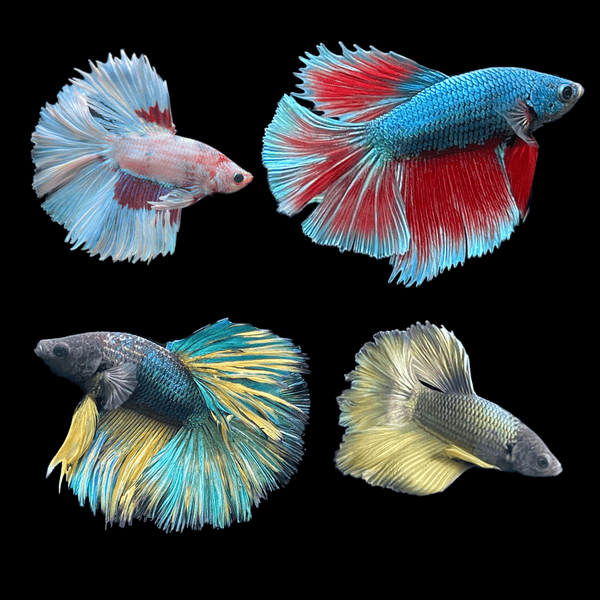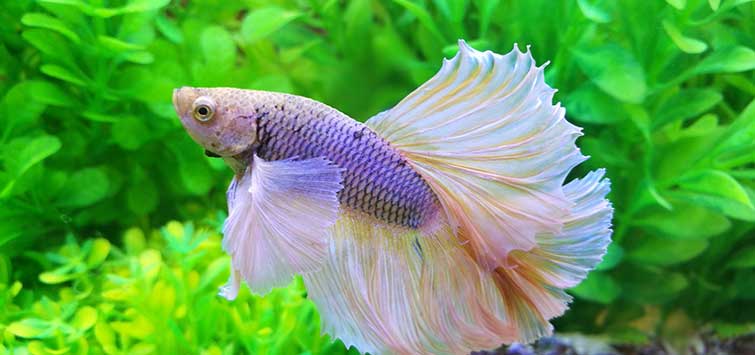Just how to Develop the Perfect Betta Fish Environment in the house
Exactly How to Breed Betta Fish Efficiently: Professional Strategies and Insights for Hobbyists Seeking To Expand Their Betta Collection
Reproducing Betta fish calls for a nuanced understanding of genes and environmental problems, making it necessary for enthusiasts to come close to the process with both persistance and treatment. Developing an ideal reproduction atmosphere, choosing the right sets, and observing the ins and outs of their courtship behaviors are foundational actions that can considerably influence the result. Furthermore, the succeeding care of the fry is important for ensuring their healthy growth. As we discover these essential parts, it becomes clear that successful reproduction is not practically the initial pairing yet encompasses a wider approach that values cautious factor to consider.
Recognizing Betta Fish Genes
Recognizing the genes of Betta fish is important for successful breeding, as it affects attributes such as shade, fin shape, and actions. Betta fish exhibit a varied selection of shades and patterns, greatly established by their genetic make-up.
In enhancement to pigmentation, fin morphology is an additional significant aspect of Betta genes (betta fish). The form and size of fins are affected by numerous genes, including those that establish whether the fins are brief, long, or veil-shaped. Recognizing these hereditary variations helps dog breeders anticipate the phenotypic outcomes of their spawn
Furthermore, behavioral attributes such as aggressiveness and territoriality can also be affected by genetics. These actions play a crucial role in the reproducing process, as they can influence spawning success and the total character of the resulting fry. By comprehensively recognizing these genetic concepts, breeders can make enlightened decisions, inevitably enhancing their reproduction programs and accomplishing preferable results.
Preparing the Reproduction Environment
Developing an optimum breeding setting is important for the effective reproduction of Betta fish. The primary step in preparing this atmosphere is to pick an appropriate reproduction tank, ideally varying from 5 to 10 gallons. This size enables enough swimming space and the facility of territories. The tank must be equipped with a heating unit to keep a stable temperature in between 78 ° F and 80 ° F, which is essential for urging generating actions.
Next, think about the usage of a sponge filter or an air rock to offer mild water blood circulation without creating strong currents that can worry the fish. It is vital to mount plants or breeding cones to offer hiding areas and advertise convenience for the lady throughout the spawning procedure. Drifting plants, such as Java moss or water sprite, can also create a more natural surroundings while assisting in bubble nest structure by the man.
Before introducing the breeding pairs, make sure the water is conditioned and complimentary from unsafe chemicals, such as chlorine or hefty steels. betta fish. Normal water modifications must be carried out to preserve ideal water high quality, enhancing the chances of successful reproduction. With these prep work in position, the breeding atmosphere will sustain the wellness and health of both Betta fish
Choosing Breeding Pairs
Selecting the right reproduction sets is essential for attaining effective Betta fish reproduction. When choosing your reproduction pairs, consider several vital aspects including health, personality, and genetics. Healthy and balanced Betta fish display vibrant shades, clear eyes, and active behavior. Picking fish that are without illness ensures a far better possibility of producing sensible see this children.
Character is another essential consideration, as Betta fish are understood for their aggressive nature. It is a good idea to select a man and female that display suitable characters to decrease anxiety throughout the breeding procedure. A calm male can urge a smoother courtship, while a woman that is also aggressive may interfere with the process.
Hereditary background likewise plays a substantial function in the top quality of the offspring. Breeding fish that are genetically varied can reduce the danger of genetic health and wellness concerns and enhance the general vitality of the fry. It is advantageous to investigate the lineage of both the male and female, focusing on preferable traits such as fin type, color scheme, and dimension.
The Reproduction Process
The breeding process of Betta fish needs mindful planning and attention to detail to make sure an effective outcome. It is crucial to prepare click an ideal reproduction tank, ideally a 5-10 gallon aquarium with a temperature preserved at 78-80 ° F. The storage tank must be outfitted with a heater, filter (preferably sponge kind to avoid strong currents), and lots of aquatic plants for the female to hide.
Once the environment is established, present the selected breeding set to the storage tank, allowing them to adjust. Observe their behavior; the male will certainly show sophisticated courtship routines, consisting of flaring his fins and building a bubble nest. If the woman shows interest, she will display upright red stripes suggesting readiness for spawning.
When the woman is receptive, both will engage in a mating welcome, throughout which the male feeds the eggs. It is important to monitor their interactions closely, as the man might end up being aggressive. After generating, eliminate the woman to stop possible harm. The man will tend to the eggs, which usually hatch within 24-36 hours. Maintaining optimum water conditions during this duration is vital for the advancement of healthy Betta fry.
Taking Care Of Betta Fry

Feeding Betta fry is critical, as they require a diet regimen high in healthy protein. They can be fed infusoria or fluid fry food, transitioning to carefully smashed high-quality pellets as they grow. Feed small sections several times a day to urge healthy and balanced development without overloading the tank with uneaten food.

As they grow, monitor their growth carefully and separate any kind of aggressive people to avoid injury. By supplying a nurturing atmosphere and correct nutrition, enthusiasts can successfully elevate Betta fry into lively, healthy fish, eventually boosting their breeding ventures.
Verdict
Effective Betta fish reproduction calls for meticulous attention to genetic selection, environmental conditions, and treatment for the fry. By comprehending the genes of Betta fish and preparing an ideal reproduction setting, enthusiasts can boost the opportunities of generating vivid, healthy and balanced spawn.